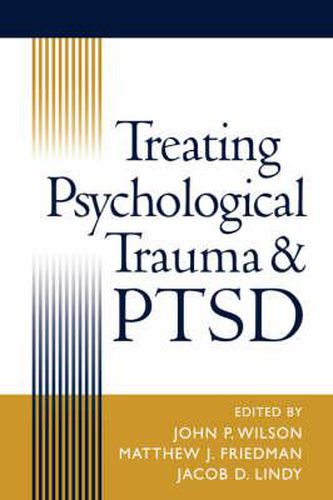Readings Newsletter
Become a Readings Member to make your shopping experience even easier.
Sign in or sign up for free!
You’re not far away from qualifying for FREE standard shipping within Australia
You’ve qualified for FREE standard shipping within Australia
The cart is loading…






This volume presents an innovative psychobiological framework for understanding and treating PTSD. A major emphasis is the need to reformulate diagnostic criteria and treatment goals to reflect emerging knowledge about the complex pathways by which trauma disrupts people’s lives. Within a holistic, organismic framework, the editors identify sixty-five PTSD symptoms contained within five (rather than the traditional three) symptom clusters, and spell out eighty target objectives for treatment. Expert contributors then provide detailed presentations of core therapeutic approaches, including acute posttraumatic interventions, cognitive-behavioral approaches, pharmacotherapy, group psychotherapy, and psychodynamic techniques, as well as approaches to working with specific populations, including children, refugees, and the dually diagnosed. The concluding section reviews and synthesizes all case material presented, examining which symptoms are addressed by each of the core approaches, which treatment goals are met, and which clients can most effectively be helped. Combining cutting-edge theoretical exposition with clear-cut recommendations for practice, this is an ideal resource for clinicians, students, and researchers.
$9.00 standard shipping within Australia
FREE standard shipping within Australia for orders over $100.00
Express & International shipping calculated at checkout
Stock availability can be subject to change without notice. We recommend calling the shop or contacting our online team to check availability of low stock items. Please see our Shopping Online page for more details.
This volume presents an innovative psychobiological framework for understanding and treating PTSD. A major emphasis is the need to reformulate diagnostic criteria and treatment goals to reflect emerging knowledge about the complex pathways by which trauma disrupts people’s lives. Within a holistic, organismic framework, the editors identify sixty-five PTSD symptoms contained within five (rather than the traditional three) symptom clusters, and spell out eighty target objectives for treatment. Expert contributors then provide detailed presentations of core therapeutic approaches, including acute posttraumatic interventions, cognitive-behavioral approaches, pharmacotherapy, group psychotherapy, and psychodynamic techniques, as well as approaches to working with specific populations, including children, refugees, and the dually diagnosed. The concluding section reviews and synthesizes all case material presented, examining which symptoms are addressed by each of the core approaches, which treatment goals are met, and which clients can most effectively be helped. Combining cutting-edge theoretical exposition with clear-cut recommendations for practice, this is an ideal resource for clinicians, students, and researchers.